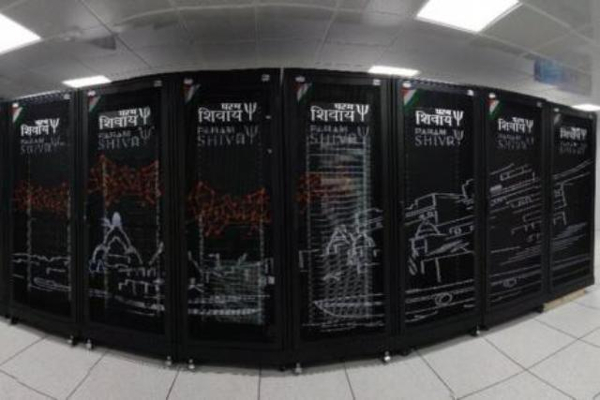As a part of the National Supercomputing Mission (NSM), India is planning to set up a slew of supercomputers across the country to form the National Knowledge Network (NKN).
Once completed, around 75 institutions and thousands of researchers will have access to the computers using the NKN to solve problems in education, industry, commerce, space, weather forecasting, oil exploration campaigns, and in the search of medicines.
India’s first supercomputer Param Shivaay set up at the Indian Institute of Technology (IIT) in Varanasi NSM
India’s current supercomputers are assembled in India but use components imported from other parts of the world. However, the Indian government is hoping to change that and have the capability to produce the country’s first indigenous supercomputer by the end of year.
14 institutes across the country — including IITs, NITs, the National Lab and IISER — have signed a Memorandum of Understanding (MoU) to manufacture the needed components within India by setting up their own infrastructure.
This includes designing and developing domestic server boards, interconnect processors, system software libraries, and storage. For instance, India already has its indigenously developed server Rudra. It’s the first server system developed in India with a full software stack.
Systems designed and manufactured in India will likely be installed at Indian Institute of Technology (IIT) Mumbai, IIT Chennai and Inter University Accelerator Center (IUAC) in Delhi and CDAC Pune.
Three ‘assembled-in India’ supercomputers already in place
Under the MoU, some supercomputers have already been installed. Others will be in place by December 2020.
The first supercomputer Param Shivaay was set up at the Indian Institute of Technology (IIT) in Varanasi last year.
Another two supercomputers have also been set up at IIT Kharagpur and the Indian Institute of Science Education and Research (IISER) in Pune.
The second and third phases
The second phase of the mission is set to be completed by April 2021. It will involve increasing the speed of the supercomputer network in the country to 16 petaflops. During this time eight more institutions will also be equipped with super computing capabilities.
In the third phase, the speed of the supercomputer network will be more than doubled to 45 petaflops. Once completed, around 75 institutions and thousands of researchers will have access to the computers using the NKN.
The endeavour to build truly ‘Made-in-India’ supercomputers puts India alongside the likes of IBM, Google and HP in the race to expand computing power and solve more complex problems.
Source: BI
You may also like
-
Dot Simplifies Approval Processes For Telecom Licenses And Wireless Equipment
-
PM to Inaugurate SEMICON India 2024 on 11th September
-
Shri Piyush Goyal Sets 500 Million Tonnes Domestic Steel Production Target by 2034
-
NHAI to Track Around 100 Toll Plazas with GIS-Based Software for Seamless Movement of Traffic at National Highways
-
“Marching Towards Building A Digitally Connected Bharat and An Atmanirbhar Telecom Sector”: Union Minister Jyotiraditya Scindia
